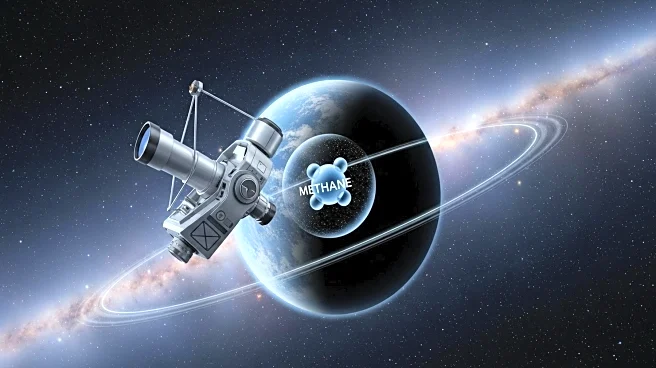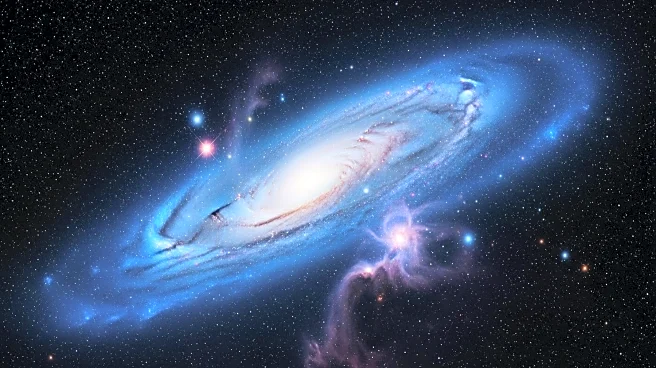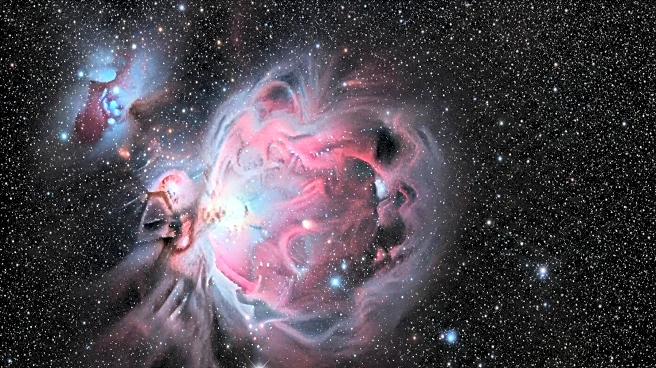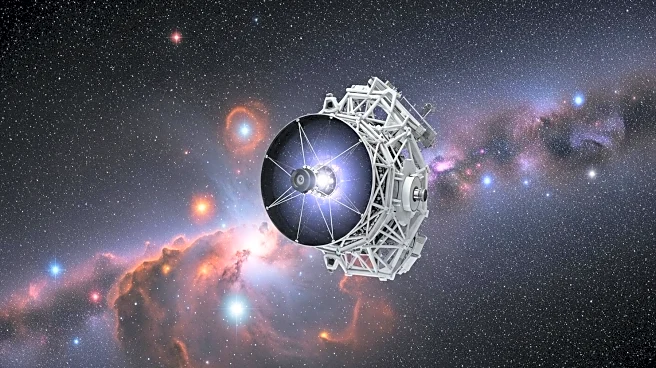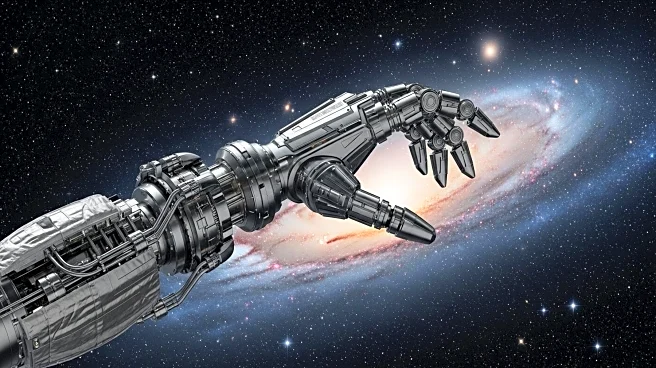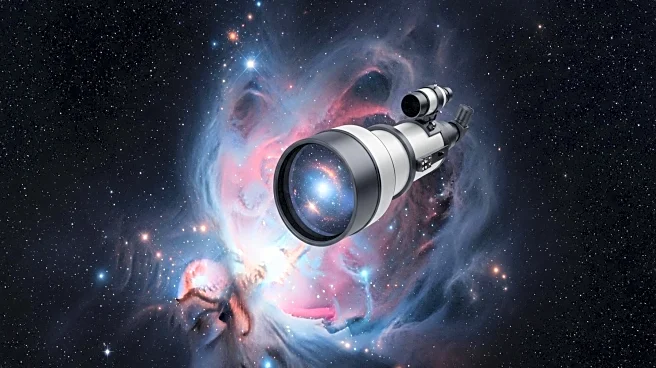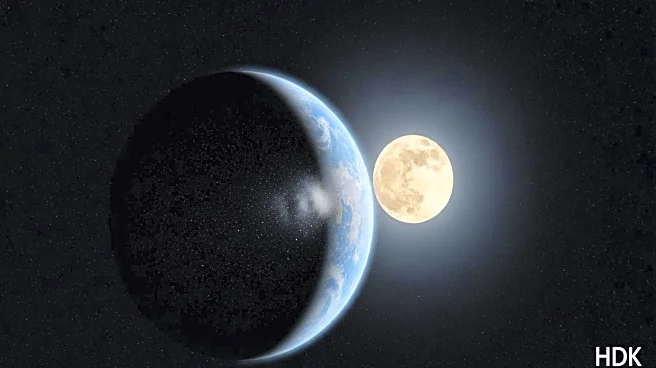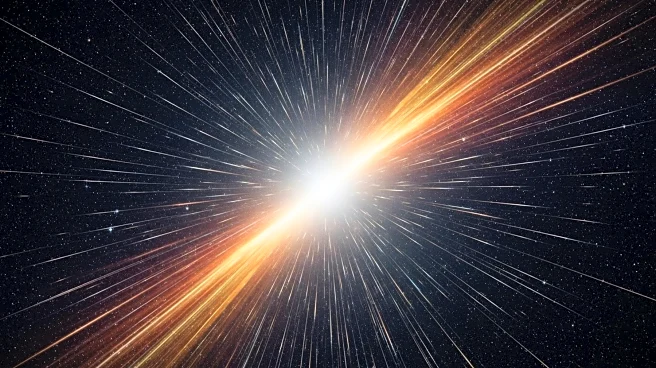What's Happening?
Astrophotographer Ronald Brecher has captured a stunning image of the Andromeda Galaxy, located approximately 2.5 million light-years from Earth. The image reveals intricate details of the galaxy's spiral arms, which are illuminated by intense star formation. Dense dust lanes are visible coiling around the galaxy's center, believed to house a supermassive black hole 140 million times more massive than the sun. Brecher's photograph also includes the nearby satellite galaxy M32 and the elliptical galaxy Messier 110. This image was taken over 38 hours between August 17 and September 2, 2025, from Brecher's home in Guelph, Canada. Historically, astronomers predicted that the Andromeda Galaxy would collide and merge with the Milky Way in about 4 billion years. However, recent studies, including research by University of Helsinki's Til Sawala, suggest that the probability of such a collision has decreased from near-certainty to a coin flip.
Why It's Important?
The detailed image of the Andromeda Galaxy provides valuable insights into the structure and dynamics of our neighboring galaxy, enhancing our understanding of galactic formations and interactions. The revised predictions regarding the potential collision between the Andromeda Galaxy and the Milky Way have significant implications for astrophysics, as they challenge long-held assumptions about the future of our galaxy. This could influence future research directions and funding priorities in the field of astronomy. Additionally, the image serves as a reminder of the vastness and complexity of the universe, inspiring both professional astronomers and amateur stargazers to continue exploring the cosmos.
What's Next?
Further studies and observations are likely to continue as astronomers seek to refine their understanding of the Andromeda Galaxy's trajectory and its potential interaction with the Milky Way. Researchers may focus on gathering more data to improve models predicting galactic movements and interactions. The astrophotography community may also be inspired to capture more images of distant galaxies, contributing to public interest and engagement in space exploration. As technology advances, new tools and methods could emerge, allowing for even more detailed observations of galaxies beyond our own.
Beyond the Headlines
The potential shift in the predicted collision between the Andromeda Galaxy and the Milky Way raises questions about the long-term fate of our galaxy and the universe. It highlights the dynamic nature of cosmic events and the importance of continuous observation and research. This development may also spark discussions about the ethical and philosophical implications of humanity's place in the universe, as well as the role of scientific inquiry in shaping our understanding of cosmic phenomena.

